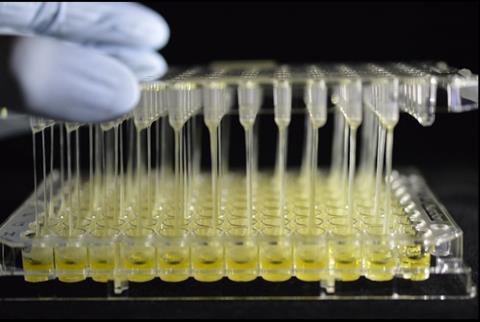Bacterial pathogens in wounds that have been treated with ionic silver can adapt and become less sensitive - thanks to biofilm formation.
The study by a team of researchers at the University of Manchester is published in ‘Variable effects of exposure to ionic silver in wound-associated bacterial pathogens’, which appears in Letters in Applied Microbiology, an Applied Microbiology International publication.

Corresponding author Dr Gavin Humphreys said the exposure of chronic wound bacteria to ionic silver was found to have led to phenotypic adaptation, including a profound increase in biofilm-mediated tolerance that was independent of changes in minimum inhibitory concentration.
Wound dressings
“Silver is frequently used in advanced medical wound dressings for the treatment of chronic wound infections. These dressings are applied over time with the aim of delivering therapeutic concentrations of ionic silver to the wound surface,” he explained.
“However, ionic silver can interact with wound fluid and the biofilm matrices which could lead to the exposure of the causative bacteria to sub-lethal concentrations of ionic silver, increasing the risk of bacterial adaptation. In the current study, we investigated how a selection of wound-derived bacteria responded to continued, sub-lethal exposure to ionic silver.”
Ionic silver
The researchers exposed bacteria derived from chronic wounds to a gradient of ionic silver over time and then assessed how the bacteria changed in susceptibility to various antimicrobials, including antibiotics and ionic silver, how quickly the adapted bacteria grew and how virulent they were in an invertebrate assay.
Previous studies have tended to focus on what happens to planktonic (free-floating) cells only so they also looked at biofilms (communities of bacteria), including how well they formed these communities, but also how sensitive they were to antimicrobials when grown as a biofilm.
Thicker biofilms
“The main surprise was when we grew one of the adapted Pseudomonas aeruginosa isolates as a biofilm,” Dr Humphreys said.
“These biofilms were markedly thicker and more mucoid (slimy) than those generated by the original parent bacterium. We also found this bacterium tolerated a concentration of ionic silver several fold higher than before adaptation.”
This work is pre-clinical but if these findings were shown to be relevant in situ, they could influence the outcome of ionic silver-based wound care regimes, he added.
Antimicrobial resistance
“Perhaps the most important implication is that our work underlines the considerable
tolerance to antimicrobials that can occur in biofilms and that this should be taken into account when assessing adaptive resistance,” he said.
“We are currently carrying out research to better understand how the Pseudomonas biofilm is able to tolerate these concentrations of ionic silver. For this, we are looking at the constituents of the biofilm matrix and how it is interacting with the ionic silver. From there, we would likely move into infection models and clinical studies.
‘Variable effects of exposure to ionic silver in wound-associated bacterial pathogens’ is published in Letters in Applied Microbiology.
Dr Humphreys was the principal investigator for the work, but it was supported by a diverse team of researchers. Dr Reem Binsuwaidan carried out a lot of the work during her time as a PhD student.
Supporting documents
Click link to download and view these filesLayout 1
Image, FileSizeText 4.1 mb
Topics
- Antimicrobial Resistance
- Applied Microbiology International
- Bacteria
- Biofilms
- Community
- Disease Treatment & Prevention
- Early Career Research
- Gavin Humphreys
- Infection Prevention & Control
- ionic siilver
- One Health
- Pseudomonas aeruginosa
- Reem Binsuwaidan
- Research News
- UK & Rest of Europe
- University of Manchester
- wound dressings







No comments yet